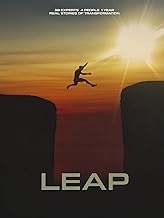While the public now knows much more about the Magic Leap One: Creator Edition today than it did yesterday, there's still a quite a bit that's unknown. One of the most significant questions — with any mixed reality product — is the field of view. How much of what we see through these glasses will contain the computer's virtual creations?
We know that Magic Leap's first device, which is for all intents and purposes a developers kit, will be available in 2018, but that's a relatively broad window. We don't have a price or even a preorder form, but we can sign-up for notifications. We know what it looks like, but that's subject to change before shipment. We know even less about technical specifications. We know it will have a "high-powered chipset," along with cameras and sensors, to power the experience, but we don't have any measurables in those regards.
When it comes to augmented reality headset specs, the field of view is perhaps the most important. A narrow field of view can make for a limiting experience, or it can work to a developer's advantage if he or she understands those constraints. When you're working with multiple virtual screens, a scenario that Magic Leap imagines as a capability, a narrow field of view could be disruptive.
While we don't know the field of view measurements of Magic Leap One, we can learn a few things from what users have experienced so far. In his hands-on the device, Rolling Stone author Brian Crecente described the field of view as "about the size of a VHS tape held in front of you with your arms half extended. It's much larger than the HoloLens, but it's still there."
As I struggled to calculate the field of view from these parameters, I found that Ron at DirectX had done my trigonometry homework for me, calculating an estimated field of view of 32.8 degrees, which is actually less than the 35 degrees of the HoloLens. That conflicts with Crecente's description of the FOV as larger than the HoloLens, so perhaps his scale estimates (VHS tape and half an arm's length) are a bit off.
Sam Miller, a senior director of systems engineering at Magic Leap, confirmed to Crecente that the devices would ship with the field of view he experienced, but added that the field of view in future generations of the device would be larger.
This sneak peek has quenched the thirst for knowledge, but we're not satiated yet. So, don't break out into a sprint yet; this is a marathon.
UPDATE: In a Reddit AMA, Crecente expanded on his impressions regarding field of view.
"The field of view was the single thing that disappointed me about the Magic Leap One. I had hopes that they had managed to create a mammoth field of view more akin to what you see with VR. They hadn't. It's much larger than HoloLens (which I've also used) but it still cuts off things as you look around. I first noticed it when I walked up to something and looked down. There was a stark horizontal line at the top of my vision where the image simply vanished. They said they're working on ways to make that less obvious, but the limited fov (SIC) will still exist at launch of the [version]," he wrote.
- Follow Next Reality on Facebook, Twitter, Instagram, YouTube, and Flipboard
- Sign up for our new Next Reality newsletter
- Follow WonderHowTo on Facebook, Twitter, Pinterest, and Flipboard
Cover image via Magic Leap





























Comments
Be the first, drop a comment!